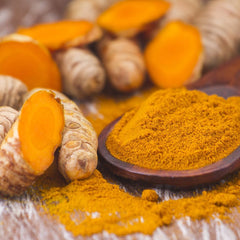What is the Difference Between Amber and Ambergris in Perfume?
Click For Affordable Inspired Perfume Alternatives
Perfume enthusiasts and industry experts alike often encounter the terms "amber" and "ambergris" when exploring the world of fragrances. While both are prized ingredients that contribute to the rich and complex scents in perfumes, they are fundamentally different in origin, composition, and usage. Understanding these differences can help consumers make more informed choices and appreciate the artistry behind their favorite fragrances. In this article, we will delve into the distinctions between amber and ambergris, exploring their origins, properties, roles in perfumery, and the ethical considerations surrounding their use.
What is the Difference Between Amber and Ambergris in Perfume?
Origins and Composition
Amber: The term "amber" in perfumery typically refers to a warm, resinous, and sweet scent note that is a blend of various ingredients rather than a single natural ingredient. Historically, the word "amber" was used to describe a fragrant, fossilized resin known as amber resin or amber fossil, but modern perfumery's "amber" is mostly a created accord. This warm, inviting scent often combines notes of vanilla, benzoin, myrrh, and incense, blended to evoke a sense of richness and depth.
Ambergris: Ambergris is a natural substance produced by sperm whales. It is a waxy, solid, or pasty material that forms in the digestive system of these whales, often as a result of the animal expelling indigestible materials like squid beaks. Over time, the expelled substance hardens and develops a complex aroma. Ambergris can vary in color from white to dark brown and has a distinctive marine, musky scent that is highly valued in perfumery.
Natural vs. Synthetic
In modern perfumery, the term "amber" often refers to a scent accord created through a combination of synthetic and natural ingredients. These accords are designed to mimic the warm, resinous, and slightly sweet aroma traditionally associated with amber. This approach allows perfumers to produce consistent, ethical, and affordable scents without relying on natural resins.
In contrast, ambergris is a natural product that is rare and expensive. Due to its origin, authentic ambergris is often considered a luxury ingredient, though its collection, trade, and use are subject to strict regulations because of conservation concerns.
Role in Perfumery
- Amber: Used primarily as a fragrance note or accord, amber provides warmth, depth, and sensuality to perfumes. It is often a key component in oriental and gourmand scents, acting as a base note that anchors the fragrance and enhances other ingredients.
- Ambergris: Valued as a fixative, ambergris helps stabilize volatile fragrance components, allowing perfumes to last longer on the skin. Its unique scent also adds complexity and a marine, musky nuance to compositions, making it a prized ingredient in luxury fragrances.
Usage and Application
Amber: In perfumes, amber is primarily used as an aroma compound or accord. It can be found in both natural and synthetic forms, providing a warm, sweet, and balsamic scent that blends well with floral, citrus, and woody notes. Amber is often the heart or base note in many compositions, giving the perfume its signature warmth and richness.
Ambergris: Ambergris is used mainly as a fixative and scent enhancer. Because of its complex aroma profile, it is often blended with other ingredients to create sophisticated, long-lasting fragrances. Its musky, marine scent adds depth and a sense of mystery to perfumes, especially in high-end or niche brands.
Ethical and Legal Considerations
- Amber: Since amber is a synthetic or natural resin, it generally does not pose significant ethical concerns. Synthetic amber accords are cruelty-free and environmentally friendly, making them popular among ethical consumers.
- Ambergris: Due to the fact that ambergris is produced by whales, its collection raises environmental and ethical issues. Historically, ambergris was obtained from stranded whales, but today, most authentic ambergris is collected from whales that have died naturally or from beached animals. Nonetheless, many countries regulate or ban the trade of ambergris to protect whale populations. As a result, most perfumers now opt for synthetic alternatives that mimic ambergris's scent profile, ensuring ethical sourcing.
Conclusion: Key Takeaways
While both amber and ambergris are revered ingredients in the world of perfumery, they are distinctly different in origin, composition, and function. Amber, in its modern usage, is a versatile, often synthetic accord that provides warmth, sweetness, and depth to fragrances. It is widely accessible and ethically produced, making it a staple in countless perfumes. Ambergris, on the other hand, is a rare natural substance created by whales, prized for its complex, marine-infused aroma and fixative properties. Due to ethical and legal considerations, the use of authentic ambergris has diminished, with synthetic versions becoming the preferred alternative.
Understanding these differences not only enriches your appreciation for fragrances but also empowers you to make informed choices aligned with your values. Whether you prefer the warm, sweet allure of amber or the mysterious, musky sophistication of ambergris, both ingredients have played and continue to play a significant role in shaping the art of perfumery.
Buy Perfumes - Best Online Retailers
Click For Affordable Inspired Perfume Alternatives
Click For The Best Niche Perfumes & Decants
Pheromone Perfumes - Confidence, Attraction & Appeal - Click For More
Home Fragrances & Candle Warmers - Click To Scent Up Your Spaces Today!



